EXPLAINED: 11 weird features you might find when property hunting in Spain
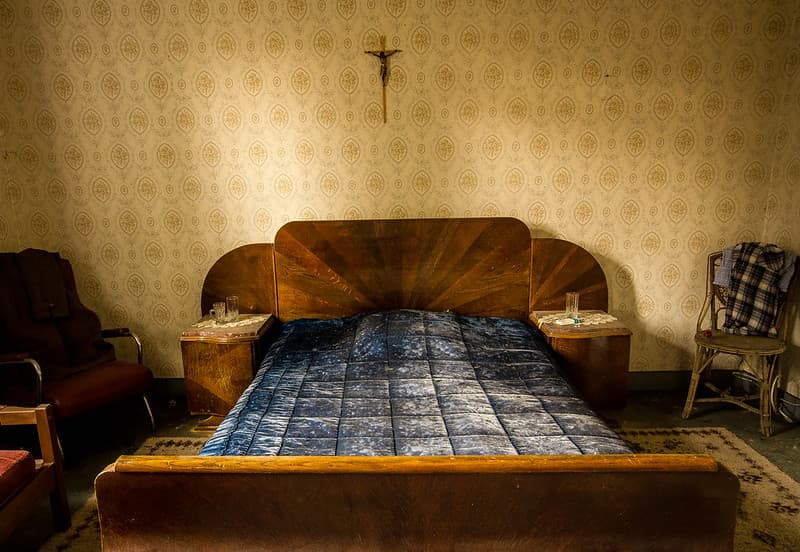
Ever looked round a property and come across something that makes you scratch your head and ask: What on earth is that?
Almost every time he visits a property with a potential buyer, Graham Hunt from Valencia Property gets asked this inevitable question.
Here he outlines the most common features found throughout Valencia and sometimes in other parts of Spain that might well raise a few eyebrows to those that haven't grown up with them.
In the end they might put someone off a property or even attract them to it more.
The Shutter Pulley
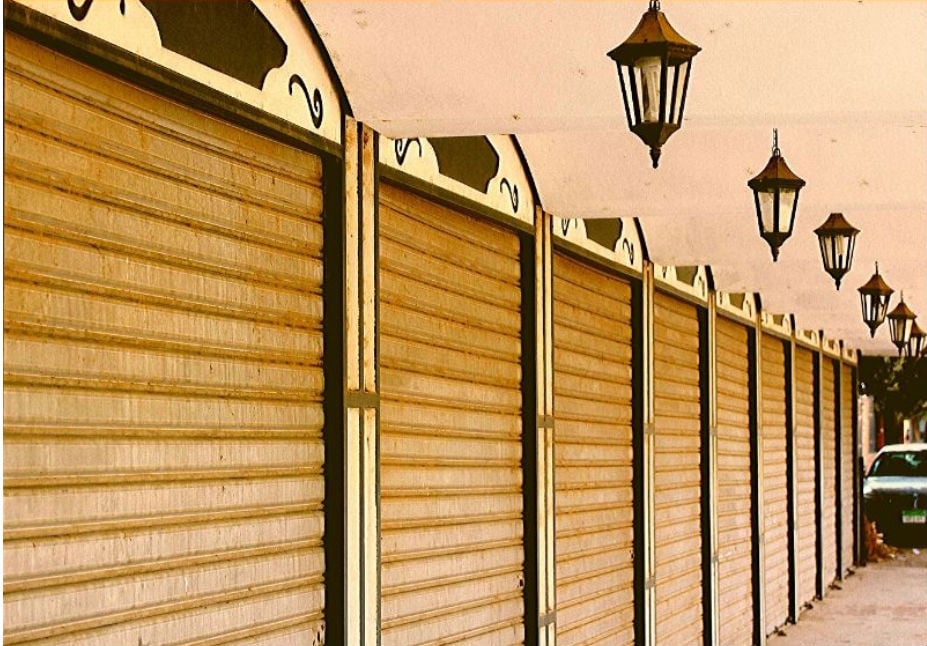
Photo: Graham Hunt/Valencia Property
The pull out, pull down shutter pulley is typically the one thing likely to not work on the older Spanish house you are taken to see. The system is great and the Spanish are almost literally obsessed by having shutters and more importantly having them down especially during hot summer afternoons.
The fact that they almost always cause problems after a long time due to broken cords, having being pulled up too far and not having a stopper or coming out of their tracks is just a slight but very common inconvenience.
They are wonderful for keeping out the heat and equally the cold, totally blacking out a room when you want to sleep and even protecting a property from robbery or fires.
Gotelé

Photo: Graham Hunt/Valencia Property
That bloody awful, almost impossible to clean, even worse to paint wall covering that virtually all older Spanish houses have. It’s a 1960’s thing and still exists until today. But why?
It turns out it’s all to do with the Spanish property boom in the last years of the 1950’s and throughout the 1960’s. Flats and houses were thrown up very quickly with little thought to aesthetics and finishes. Gotelé hid imperfections really well and there were a lot of imperfections in walls.
The term “Paredes Lisas” (Smooth or flat walls) is now common in property adverts to show that despite any other flaws the place may have at least it doesn’t have Gotelé. Getting rid of it and flattening the walls costs around 2-3000 Euros for an average flat but remember you might (Will definitely) then see the imperfections.
The Paellero
It’s almost obligatory in the average Valencian house. It’s so prevalent that we published an apartment in La Pobla de Vallbona this week which had a paellero in an upstairs bedroom next to a bed!
That’s just mental but it shows the importance of a paellero. However, the paellero is there for a reason, it means you can make paellas all year round of course even when it’s cold but really it’s there to stop you burning the whole of the Valencia region to the ground.
The fact is that the traditional paella is made over orange wood and that in the afternoon the breeze gets up in Valencia. This led to quite a few devastating fires over the years as sparks from unattended Paellas set fire to surrounding vegetation.
This has been especially problematic in the summers when there has been a dry spell. A local bylaw was put in place therefore that paellas are cooked inside. Obviously this meant a growth in the building of paelleros or outside barbecues. Now almost every house has one.
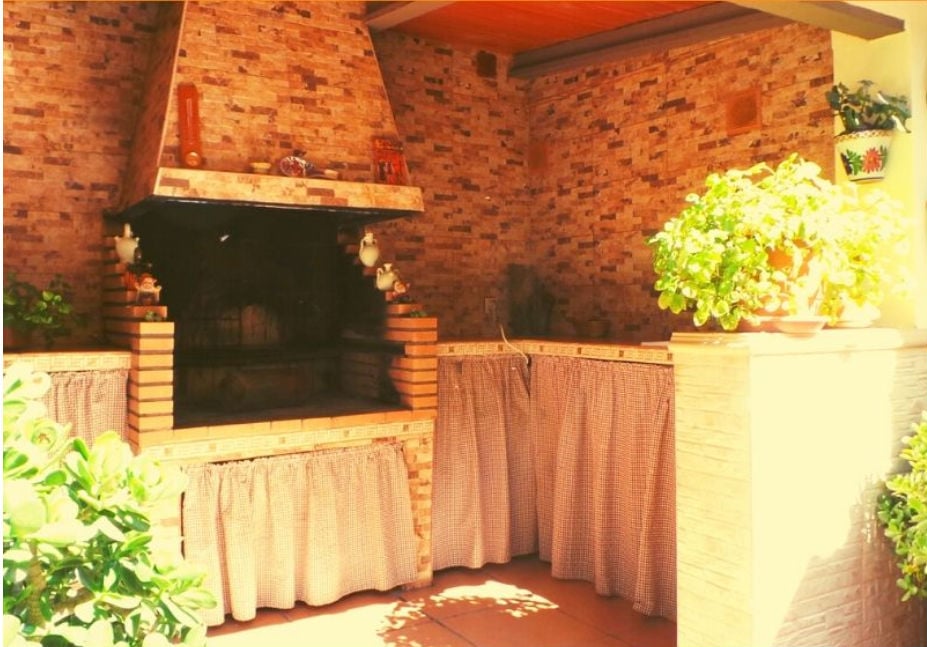
Your own outdoor barbecue in Valencia. This one is in Naquera. Photo: Photo: Graham Hunt/Valencia Property
One of the consequences though is that if you are buying a house that has been in the same family for decades it is very likely that the paellero doesn’t appear on the deeds. However the local authorities didn’t prosecute this illegal building as it made sure there was less of a chance of forest fires. (Swings and roundabouts you see) Equally it can generally now be declared prior to your purchase as it has been there for over 15 years and the illegality of the building has now prescribed.
The Awning
Awnings complement the blinds. They are not there instead of blinds. They provide another level of shade on days when you might have the blinds open. You see them very commonly on south facing properties so that the sunlight doesn’t burn into the house during the hottest parts of the year.
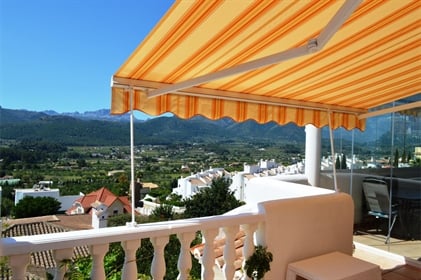
A typical awning in Valencia Photo: Graham Hunt/Valencia Property
Now don’t expect the awning to be in as good a condition as the one in the picture. They are exposed to the elements all year which means a lot of sun, some serious winds and when it rains, it’s heavy. If they are not looked after they get discoloured, get moss on them and start to get frayed around the edges or just rip.
Don’t worry though, as long as the mechanism still works the material can be changed. And there are plenty of companies around who will replace the material, the whole mechanism or even put in new awnings to replace what is there. One thing, if your awning is on a building with other awnings you need to find the exact same material to replace the old material and sometimes this is impossible which is why you see fraying and ripped awnings on flats all around Valencia.
Believe us though, if an awning is there it means you probably need an awning so best to look after it and not remove it. That little sun trap you so loved on your first visit to the house in March might well be a furnace in August and it is then that you will welcome the awning.
The Jamonero
You are being taken around the house by the agent, you have seen the paellero, the awning, the broken roller blind etc… and you walk into the kitchen and see this.
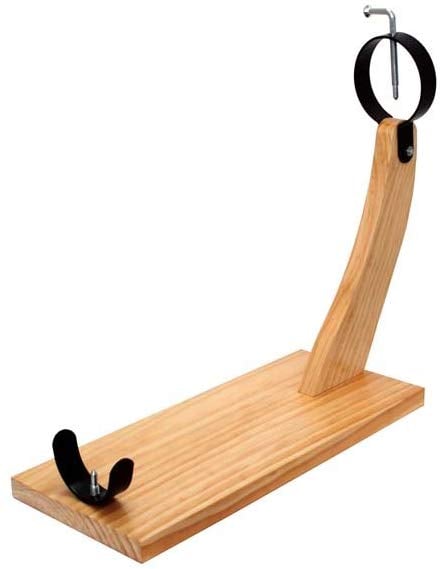
It’s not a torture instrument for naughty kids, it’s not a sex toy, it’s a Jamonero. However out of context it looks a bit weird. It actually helps if you see this:
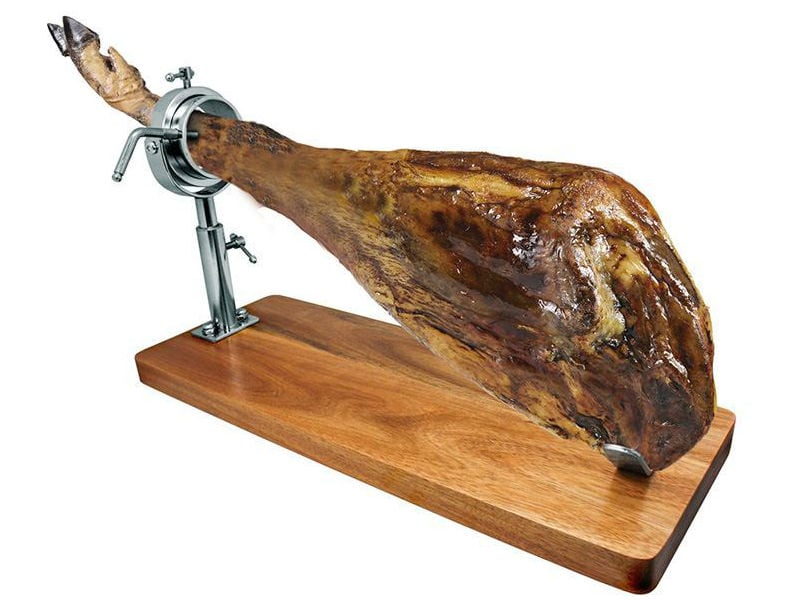
This gives you more of a clue of what it is. You are virtually guaranteed to see the latter if visiting houses in January or February because everyone gets a ham for Christmas and then spends the next two months hacking away at it for snacks during the day (Yes hacking, not gracefully carving slivers like it should be).
The Spanish love affair with jamón goes on and even the Prime Minister can be ridiculed if he cannot tell his Jamón Ibérico from his plain old Jamon Serrano.
One thing you should never say to a Spanish seller is that you prefer boiled ham - Jamón York in Spanish. That’s such an insult to traditional Spanish ham that they may refuse to sell the house to such a heathen.
The Single Lemon Tree
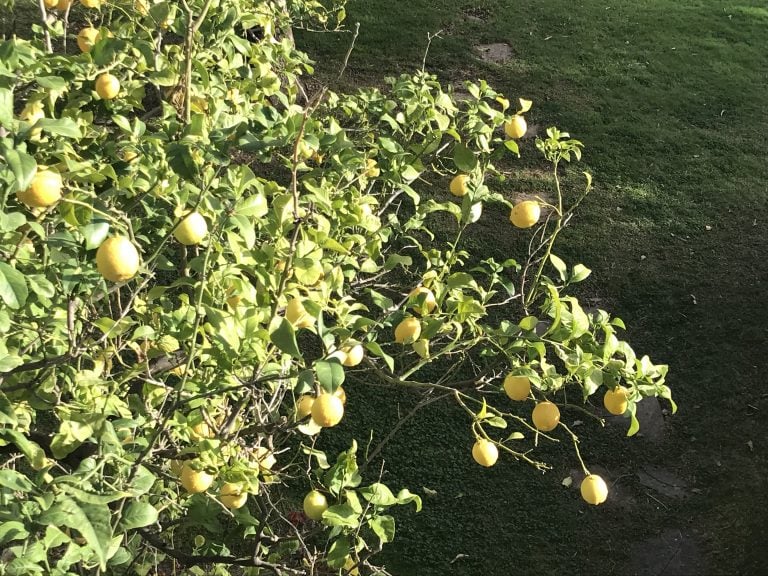
Photo: Graham Hunt/Valencia Property
You look round a huge garden full of orange trees, figs, almonds, artichokes, tomatoes and more and then you see a thriving lemon tree, and virtually always there is one. You then wonder why there is only one and why it is thriving.
The second question is strangest answer, it is likely that the lemon tree marks where the soakaway septic tank is hidden.
Let’s just say the tree is naturally watered and fertilised. The first question is all to do with culinary traditions. Once you have finished making your food in the paellero you bring out the finished paealla and then pick a lemon from the tree to accompany the dish.
Lemon juice is added and the paella is ready. The rest is then added to the water served with the foods and any left over goes into the Gin and Tonic during the sobremesa (After lunch chatting which can go on for hours) As a result we often refer to the lemon trees as “The Gin and Tonic tree” when showing houses.
The Huge Cross On The Wall Over The Bed
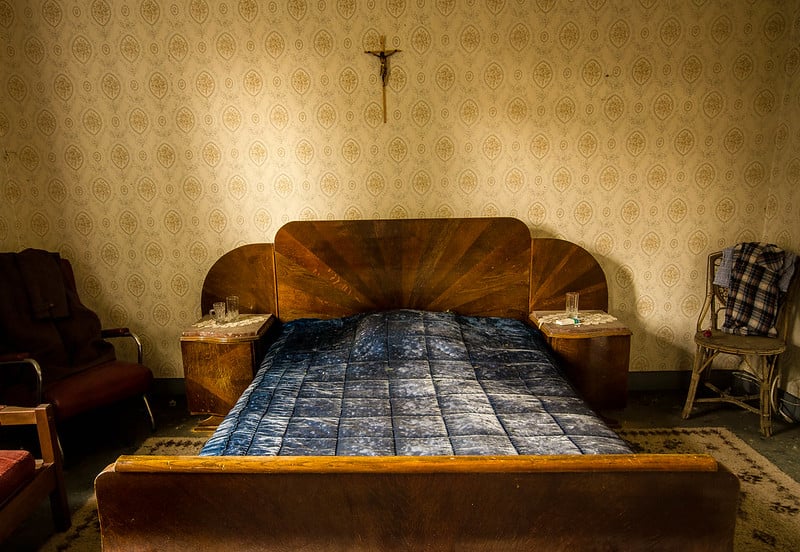 Photo: OlavXO/Flickr
Photo: OlavXO/Flickr
Pretty self-explanatory really. Remember Spain is traditional a Catholic country and many people, especially those of a certain generation, still believe that a crucifix over the bed offers essential protection.
The Meat Hooks
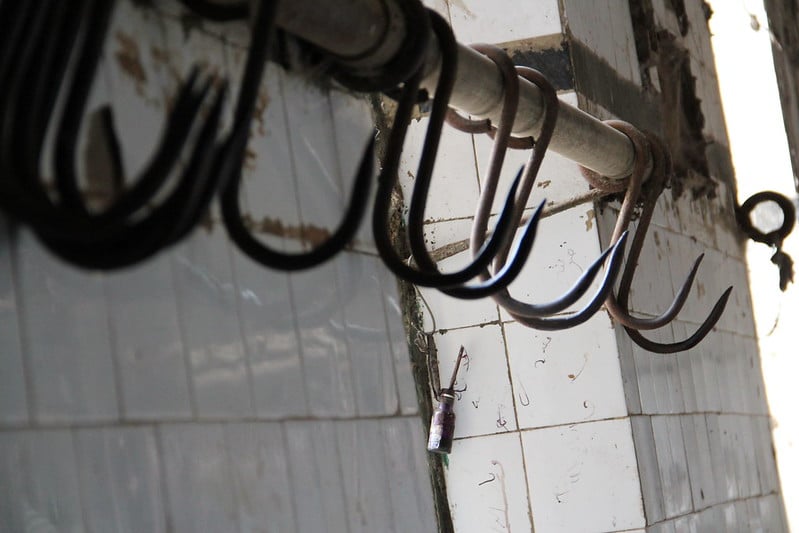
Photo: Adel Anwar/Flickr
Nothing to do with “The Long Good Friday” and Bob Hoskins you often find meat hooks in the outhouses, garages and storerooms all around the Valencia community.
They are there because in the past people hung meat from them of course when they were drying out ham legs, curing sausages and more. However these days they usually have umbrellas, broken toys, any number of garden implements or dartboards hanging from them. More usually though they just stick out from the wall rustily in order to remind you that you really should have had that Tetanus shot recently once you have walked into one and you are studying the scar.
The Asbestos Roof
That corrugated roof thing that is on the paellero or covering a terrace or a garage and you want to change… be careful. That’s asbestos. Known as Uralita in Spain due to the company that made it, asbestos roofing was banned in 2002. However stocks could still be sold until they ran out. The life cycle of asbestos roofing is between 30-50 years so you still see it everywhere. If you want to get rid of it then you need to contract a company that specialises in this material and the process is long and can be expensive.
 Photo: An asbestos roof. You still see these all over Spain. Graham Hunt/Valencia Property
Photo: An asbestos roof. You still see these all over Spain. Graham Hunt/Valencia Property
The roofing itself is not dangerous, it’s when it breaks or is broken up that it releases asbestos fibres which are extremely dangerous for your health. Therefore leaving an asbestos roof in place is not usually an issue if it is in good condition. It becomes an issue on removal or when it gets broken or in bad condition.
The Illegal Extension
Your lawyer gets hold of the deeds while doing the conveyancing for your house and finds that contrary to what you have told him that you are buying a lovely 250m2 house with pool that on the deeds there appears to be a 100m2 house and no pool. You have noticed that some of the house is more modern than the rest but maybe you didn’t give it a second though. What happens now?
There are a few scenarios that can play out and they are nothing to worry about in general, it’s your lawyer’s job to worry about it not you. Firstly, maybe the extension was built over 15 years ago. Even if it was illegal then it can be legalised now in most cases and it is the responsibility of the owner to get it done before the purchase, a new build declaration. Secondly, it might actually have had the right papers and permits when it was done (I know, mad that isn’t it!) However, that new build declaration was never done and it is still the responsibility of the owner to do it now. Lastly, it might be totally illegal and the lawyer may tell you to maybe not touch that house with a bargepole because it could come back to bite you.
Don’t believe the agent that tells you it’s not an issue, don’t believe the owner. It needs sorting before sale and the truth is it usually can be. It costs and those costs are for the current owner not you as a buyer. If it cannot be sorted then just walk away, there will be other houses.
The Lladró Figurines and Their Copies
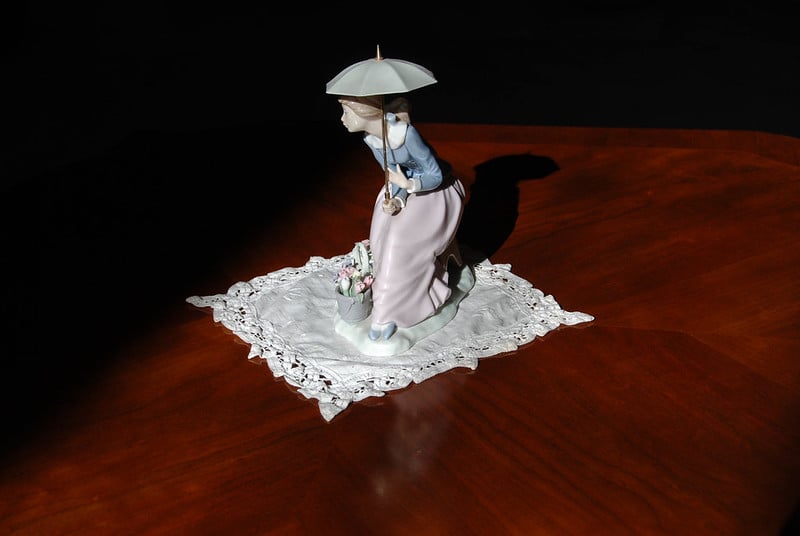
Photo of a Lladró figurine by Daniel Crookston /Flickr
The dancing ballerina, the crying child or the Japanese Geisha. They are hallmarks of the Lladró company based in Valencia. Delicate Porcelain figurines adorning fireplaces, shelves and glass door cupboards gathering dust and often with an arm or a hand missing, they are delicate and cats like knocking them off said shelves and fireplaces.
Lladró figurines cost an absolute fortune so you often find rip off copies liberally scattered around older Spanish houses. If you are left any on buying your house in Valencia then check it’s authentic and get yourself onto eBay where you might be able to make a killing, there are collectors all over the World. Alternatively you could keep them but let’s not go there.
Graham Hunt is a real estate agent and relocation expert based in Valencia. Originally from just outside Liverpool he came to Spain as a student and never left. Read more at his blog or follow him on Twitter.
If you want him to show you around some properties in Valencia, drop him a line.
READ MORE:
Comments (2)
See Also
Almost every time he visits a property with a potential buyer, Graham Hunt from Valencia Property gets asked this inevitable question.
Here he outlines the most common features found throughout Valencia and sometimes in other parts of Spain that might well raise a few eyebrows to those that haven't grown up with them.
In the end they might put someone off a property or even attract them to it more.
The Shutter Pulley

Photo: Graham Hunt/Valencia Property
The pull out, pull down shutter pulley is typically the one thing likely to not work on the older Spanish house you are taken to see. The system is great and the Spanish are almost literally obsessed by having shutters and more importantly having them down especially during hot summer afternoons.
The fact that they almost always cause problems after a long time due to broken cords, having being pulled up too far and not having a stopper or coming out of their tracks is just a slight but very common inconvenience.
They are wonderful for keeping out the heat and equally the cold, totally blacking out a room when you want to sleep and even protecting a property from robbery or fires.
Gotelé

Photo: Graham Hunt/Valencia Property
That bloody awful, almost impossible to clean, even worse to paint wall covering that virtually all older Spanish houses have. It’s a 1960’s thing and still exists until today. But why?
It turns out it’s all to do with the Spanish property boom in the last years of the 1950’s and throughout the 1960’s. Flats and houses were thrown up very quickly with little thought to aesthetics and finishes. Gotelé hid imperfections really well and there were a lot of imperfections in walls.
The term “Paredes Lisas” (Smooth or flat walls) is now common in property adverts to show that despite any other flaws the place may have at least it doesn’t have Gotelé. Getting rid of it and flattening the walls costs around 2-3000 Euros for an average flat but remember you might (Will definitely) then see the imperfections.
The Paellero
It’s almost obligatory in the average Valencian house. It’s so prevalent that we published an apartment in La Pobla de Vallbona this week which had a paellero in an upstairs bedroom next to a bed!
That’s just mental but it shows the importance of a paellero. However, the paellero is there for a reason, it means you can make paellas all year round of course even when it’s cold but really it’s there to stop you burning the whole of the Valencia region to the ground.
The fact is that the traditional paella is made over orange wood and that in the afternoon the breeze gets up in Valencia. This led to quite a few devastating fires over the years as sparks from unattended Paellas set fire to surrounding vegetation.
This has been especially problematic in the summers when there has been a dry spell. A local bylaw was put in place therefore that paellas are cooked inside. Obviously this meant a growth in the building of paelleros or outside barbecues. Now almost every house has one.

Your own outdoor barbecue in Valencia. This one is in Naquera. Photo: Photo: Graham Hunt/Valencia Property
One of the consequences though is that if you are buying a house that has been in the same family for decades it is very likely that the paellero doesn’t appear on the deeds. However the local authorities didn’t prosecute this illegal building as it made sure there was less of a chance of forest fires. (Swings and roundabouts you see) Equally it can generally now be declared prior to your purchase as it has been there for over 15 years and the illegality of the building has now prescribed.
The Awning
Awnings complement the blinds. They are not there instead of blinds. They provide another level of shade on days when you might have the blinds open. You see them very commonly on south facing properties so that the sunlight doesn’t burn into the house during the hottest parts of the year.

A typical awning in Valencia Photo: Graham Hunt/Valencia Property
Now don’t expect the awning to be in as good a condition as the one in the picture. They are exposed to the elements all year which means a lot of sun, some serious winds and when it rains, it’s heavy. If they are not looked after they get discoloured, get moss on them and start to get frayed around the edges or just rip.
Don’t worry though, as long as the mechanism still works the material can be changed. And there are plenty of companies around who will replace the material, the whole mechanism or even put in new awnings to replace what is there. One thing, if your awning is on a building with other awnings you need to find the exact same material to replace the old material and sometimes this is impossible which is why you see fraying and ripped awnings on flats all around Valencia.
Believe us though, if an awning is there it means you probably need an awning so best to look after it and not remove it. That little sun trap you so loved on your first visit to the house in March might well be a furnace in August and it is then that you will welcome the awning.
The Jamonero
You are being taken around the house by the agent, you have seen the paellero, the awning, the broken roller blind etc… and you walk into the kitchen and see this.

It’s not a torture instrument for naughty kids, it’s not a sex toy, it’s a Jamonero. However out of context it looks a bit weird. It actually helps if you see this:

This gives you more of a clue of what it is. You are virtually guaranteed to see the latter if visiting houses in January or February because everyone gets a ham for Christmas and then spends the next two months hacking away at it for snacks during the day (Yes hacking, not gracefully carving slivers like it should be).
The Spanish love affair with jamón goes on and even the Prime Minister can be ridiculed if he cannot tell his Jamón Ibérico from his plain old Jamon Serrano.
One thing you should never say to a Spanish seller is that you prefer boiled ham - Jamón York in Spanish. That’s such an insult to traditional Spanish ham that they may refuse to sell the house to such a heathen.
The Single Lemon Tree

Photo: Graham Hunt/Valencia Property
You look round a huge garden full of orange trees, figs, almonds, artichokes, tomatoes and more and then you see a thriving lemon tree, and virtually always there is one. You then wonder why there is only one and why it is thriving.
The second question is strangest answer, it is likely that the lemon tree marks where the soakaway septic tank is hidden.
Let’s just say the tree is naturally watered and fertilised. The first question is all to do with culinary traditions. Once you have finished making your food in the paellero you bring out the finished paealla and then pick a lemon from the tree to accompany the dish.
Lemon juice is added and the paella is ready. The rest is then added to the water served with the foods and any left over goes into the Gin and Tonic during the sobremesa (After lunch chatting which can go on for hours) As a result we often refer to the lemon trees as “The Gin and Tonic tree” when showing houses.
The Huge Cross On The Wall Over The Bed
 Photo: OlavXO/Flickr
Photo: OlavXO/Flickr
Pretty self-explanatory really. Remember Spain is traditional a Catholic country and many people, especially those of a certain generation, still believe that a crucifix over the bed offers essential protection.
The Meat Hooks

Photo: Adel Anwar/Flickr
Nothing to do with “The Long Good Friday” and Bob Hoskins you often find meat hooks in the outhouses, garages and storerooms all around the Valencia community.
They are there because in the past people hung meat from them of course when they were drying out ham legs, curing sausages and more. However these days they usually have umbrellas, broken toys, any number of garden implements or dartboards hanging from them. More usually though they just stick out from the wall rustily in order to remind you that you really should have had that Tetanus shot recently once you have walked into one and you are studying the scar.
The Asbestos Roof
That corrugated roof thing that is on the paellero or covering a terrace or a garage and you want to change… be careful. That’s asbestos. Known as Uralita in Spain due to the company that made it, asbestos roofing was banned in 2002. However stocks could still be sold until they ran out. The life cycle of asbestos roofing is between 30-50 years so you still see it everywhere. If you want to get rid of it then you need to contract a company that specialises in this material and the process is long and can be expensive.
 Photo: An asbestos roof. You still see these all over Spain. Graham Hunt/Valencia Property
Photo: An asbestos roof. You still see these all over Spain. Graham Hunt/Valencia Property
The roofing itself is not dangerous, it’s when it breaks or is broken up that it releases asbestos fibres which are extremely dangerous for your health. Therefore leaving an asbestos roof in place is not usually an issue if it is in good condition. It becomes an issue on removal or when it gets broken or in bad condition.
The Illegal Extension
Your lawyer gets hold of the deeds while doing the conveyancing for your house and finds that contrary to what you have told him that you are buying a lovely 250m2 house with pool that on the deeds there appears to be a 100m2 house and no pool. You have noticed that some of the house is more modern than the rest but maybe you didn’t give it a second though. What happens now?
There are a few scenarios that can play out and they are nothing to worry about in general, it’s your lawyer’s job to worry about it not you. Firstly, maybe the extension was built over 15 years ago. Even if it was illegal then it can be legalised now in most cases and it is the responsibility of the owner to get it done before the purchase, a new build declaration. Secondly, it might actually have had the right papers and permits when it was done (I know, mad that isn’t it!) However, that new build declaration was never done and it is still the responsibility of the owner to do it now. Lastly, it might be totally illegal and the lawyer may tell you to maybe not touch that house with a bargepole because it could come back to bite you.
Don’t believe the agent that tells you it’s not an issue, don’t believe the owner. It needs sorting before sale and the truth is it usually can be. It costs and those costs are for the current owner not you as a buyer. If it cannot be sorted then just walk away, there will be other houses.
The Lladró Figurines and Their Copies

Photo of a Lladró figurine by Daniel Crookston /Flickr
The dancing ballerina, the crying child or the Japanese Geisha. They are hallmarks of the Lladró company based in Valencia. Delicate Porcelain figurines adorning fireplaces, shelves and glass door cupboards gathering dust and often with an arm or a hand missing, they are delicate and cats like knocking them off said shelves and fireplaces.
Lladró figurines cost an absolute fortune so you often find rip off copies liberally scattered around older Spanish houses. If you are left any on buying your house in Valencia then check it’s authentic and get yourself onto eBay where you might be able to make a killing, there are collectors all over the World. Alternatively you could keep them but let’s not go there.
Graham Hunt is a real estate agent and relocation expert based in Valencia. Originally from just outside Liverpool he came to Spain as a student and never left. Read more at his blog or follow him on Twitter.
If you want him to show you around some properties in Valencia, drop him a line.
READ MORE:
Join the conversation in our comments section below. Share your own views and experience and if you have a question or suggestion for our journalists then email us at [email protected].
Please keep comments civil, constructive and on topic – and make sure to read our terms of use before getting involved.
Please log in here to leave a comment.